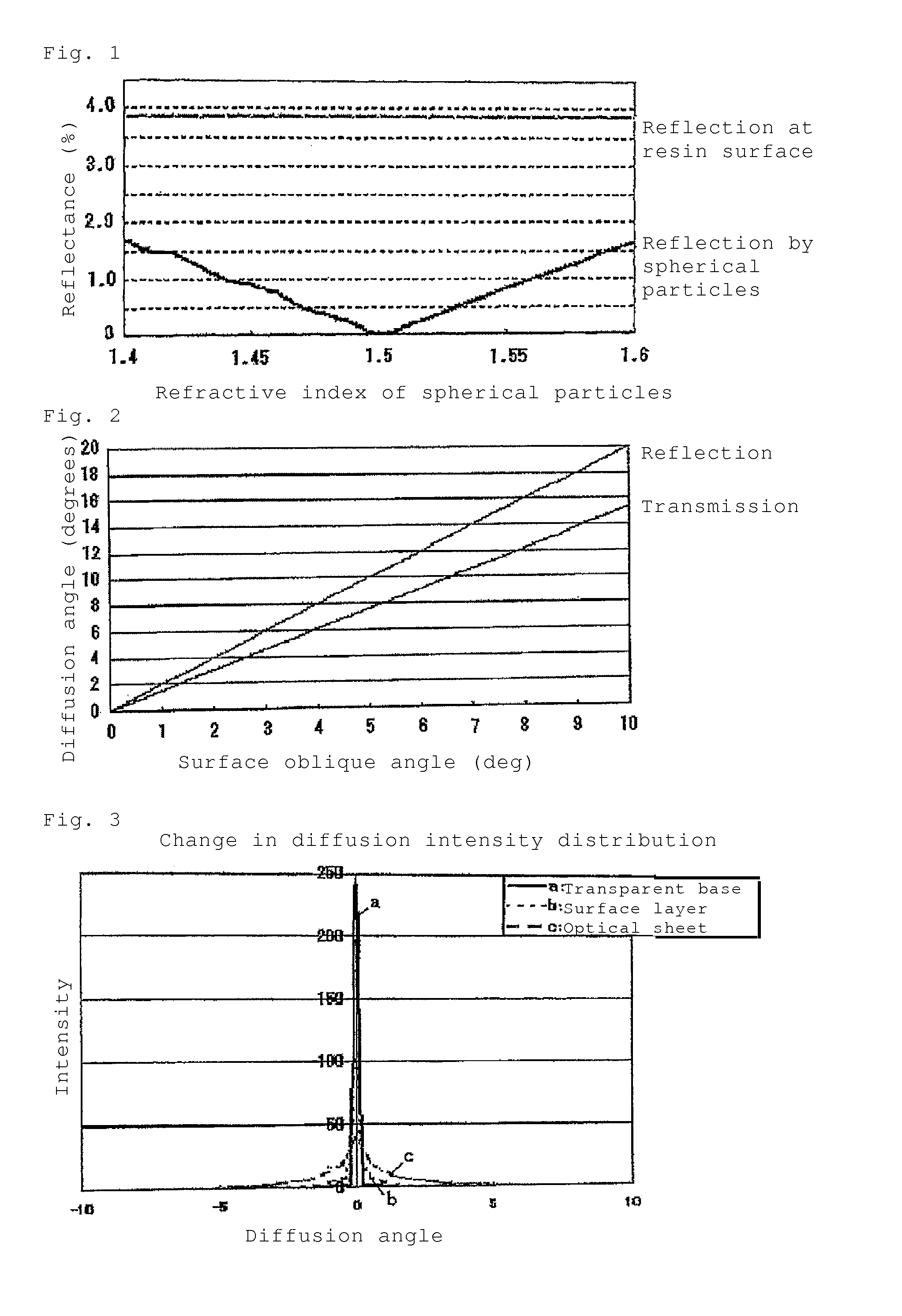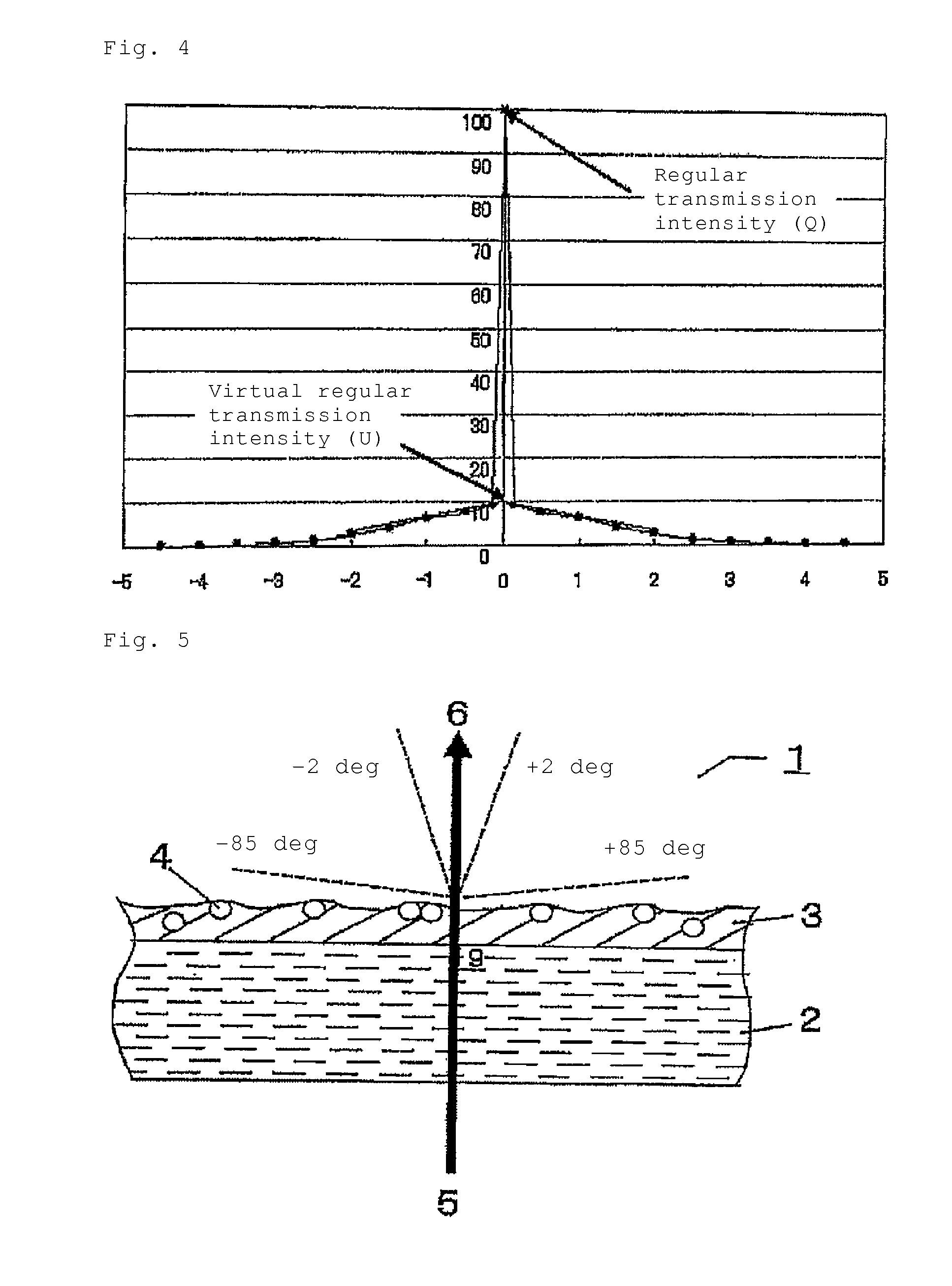Anti-glare sheet for image display device
- Summary
- Abstract
- Description
- Claims
- Application Information
AI Technical Summary
Benefits of technology
Problems solved by technology
Method used
Image
Examples
example 1
[0236]Triacetyl cellulose (80 μm thickness, FujiFilm Corp.) was prepared as a transparent base material.
[0237]As the first binder there was used a mixture of 70 parts by mass of pentaerythritol tetraacrylate (PETTA, product name: M-451, product of Toagosei Co., Ltd.) and 30 parts by mass of isocyanuric acid PO-modified triacrylate (product name: M-313, product of Toagosei Co., Ltd.) (refractive index: 1.51).
[0238]To this there was added styrene acrylic copolymer particles (refractive index: 1.57, mean particle size: 5 μm, product of Sekisui Plastics Co., Ltd.) as diffusion particles and reactive colloidal silica (product name: MIBK-SD, mean particle size: 12 nm, solid content: 30%, MIBK solvent, product of Nissan Chemical Industries, Ltd.) as dispersion-controlling fine particles, at 17 and 12 parts by mass, respectively, with respect to 100 parts by mass of the binder resin.
[0239]There were also added the initiator IRGACURE 184 (product of BASF, Japan) and the leveling agent polyet...
example 2
[0244]An anti-glare sheet was fabricated in the same manner as Example 1, except that the diffusion particles for formation of the texturized layer were used at 13 parts by mass, and the overall thickness of the anti-glare layer was 6.2 μm.
example 3
[0245]An anti-glare sheet was fabricated in the same manner as Example 1, except that the diffusion particles for formation of the texturized layer were used at 11 parts by mass, and the overall thickness of the anti-glare layer was 5.3 μm.
PUM
| Property | Measurement | Unit |
|---|---|---|
| Angle | aaaaa | aaaaa |
| Angle | aaaaa | aaaaa |
| Angle | aaaaa | aaaaa |
Abstract
Description
Claims
Application Information
 Login to View More
Login to View More - R&D
- Intellectual Property
- Life Sciences
- Materials
- Tech Scout
- Unparalleled Data Quality
- Higher Quality Content
- 60% Fewer Hallucinations
Browse by: Latest US Patents, China's latest patents, Technical Efficacy Thesaurus, Application Domain, Technology Topic, Popular Technical Reports.
© 2025 PatSnap. All rights reserved.Legal|Privacy policy|Modern Slavery Act Transparency Statement|Sitemap|About US| Contact US: help@patsnap.com



